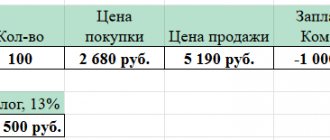Who can be a party to the loan agreement
Let us say right away that the legislation does not in any way connect the possibility of concluding an interest-free loan agreement with the legal status of its parties.
This means that commercial organizations, individual entrepreneurs, and “ordinary” individuals can apply for such a loan. The specified legal entities and individuals can act as any party to the interest-free loan agreement, and any combination of these persons is possible. There is also no restriction on concluding such an agreement between interdependent and affiliated persons (as opposed to an agreement for the gratuitous use of property (loan)). This means that an interest-free loan agreement can be drawn up between the parent and subsidiary companies; between an organization and its participant (founder), or between an LLC and its manager (both an individual entrepreneur and a legal entity).
And finally, it is not prohibited to take interest-free loans from the head of the company, as well as from other employees, regardless of their position. Likewise, a company can issue a similar loan to any of its employees.
Check the counterparty for signs of a shell company and the presence of disqualified persons
Exception: home loan
You do not need to pay personal income tax if you spent the loan on buying a home and you have the right to a property deduction. To do this, after purchasing an apartment, you need to receive a notice of property deduction from the tax office according to your registration and hand it over to the organization. Before receiving a notice of deduction, the organization calculates and withholds personal income tax on material benefits, after which the withheld personal income tax can be returned.
Submit reports in three clicks
Elba - online accounting for individual entrepreneurs and LLCs. The service will prepare reports, calculate taxes and free up time for useful things.
Try 30 days free Gift for new entrepreneurs A year on “Premium” for individual entrepreneurs under 3 months
Loan from a participant: risk of contract requalification
However, in some cases, when concluding a loan agreement, civil legal risks are still present. They are associated with the possibility of recharacterizing an interest-free loan that an organization received from its founder or participant into a non-repayable contribution to the organization’s property.
The court may make such a conclusion if the loan was issued for a long period (for example, for a period exceeding three years), or the term of the loan agreement was repeatedly extended. The risk also arises if the amount transferred as loans was not claimed after the end of the contract.
Recharacterization of the agreement is also possible in other cases if the court, taking into account the circumstances of the issuance and repayment of the loan, comes to the conclusion that the lender did not intend to get the money back. In particular, the risk zone includes interest-free loans, the issuance of which included such purposes as “ensuring economic activity”, “business development” or “replenishing working capital” (see, for example, the ruling of the Arbitration Court of the Khabarovsk Territory dated 01/09/18 No. A73-18372/2017).
Note that if the court makes such a decision, the lender will lose the opportunity to return his money. However, for the borrower, recharacterization of the agreement will entail tax consequences only if the funds were received from a manager who is not a participant. After all, such a person cannot contribute to the property of the LLC (Article 27 of the Federal Law of 02/08/98 No. 14-FZ “On Limited Liability Companies”, hereinafter referred to as the LLC Law). This means that the borrower will have to include the money recognized as irrevocable as income, since these amounts do not fall within the scope of subclause 3.7 of clause 1 of Article 251 of the Tax Code of the Russian Federation. (We would like to remind you that this rule allows you not to take into account the contribution to the property of an LLC in income only if it was received in the manner established by the civil legislation of the Russian Federation).
Keep records, prepare and submit income tax and VAT reports
How to draw up a loan agreement
If the lender is a legal entity, the Civil Code requires that a loan agreement be concluded in writing, regardless of the amount (Clause 1, Article 808 of the Civil Code of the Russian Federation). However, no special rules have been established for contracts where a legal entity is the borrower. This means that the general rule of Article 161 of the Civil Code of the Russian Federation on the mandatory written execution of agreements concluded by legal entities among themselves or with citizens is in force.
Thus, an interest-free loan agreement under which an organization receives funds must be drawn up in writing. In this regard, in small companies the question arises: how to draw up such an agreement if the money is given by its director (he may also be the only participant)? Indeed, in such a situation, the contract will have two identical signatures of the parties. Will this be consistent with the essence of the contract (i.e., an agreement between two persons), and will it not violate the rule prohibiting the representative from taking actions in relation to himself on behalf of the represented person?
In fact, the above contradictions are only apparent, and there is no violation in the fact that the same person signed the agreement on both the part of the lender and the part of the borrower. Let's explain why.
The prohibition on a representative performing actions on behalf of the represented person in relation to himself contains an important clause: “except for cases provided for by law” (Clause 3 of Article 182 of the Civil Code of the Russian Federation). And one of such cases is provided for by the LLC Law. Paragraph 1 of Article 45 of this law directly establishes the possibility of concluding an agreement between an LLC and its manager, and spells out special rules on interest in such a transaction. The admissibility of the transactions in question is also confirmed by judicial practice (see paragraph 121 of the resolution of the Plenum of the Supreme Court of the Russian Federation dated 06.23.15 No. 25 and the resolution of the Presidium of the Supreme Arbitration Court of the Russian Federation dated 09.21.05 No. 6773/05).
Let us also note that a borrowing relationship can be formalized not only by an agreement signed by both parties, but also by a unilateral receipt or other document confirming the transfer of money by the lender. For example, this document could be an outgoing cash order or a receipt for a cash incoming order (resolution of the Arbitration Court of the Far Eastern District dated May 16, 2018 No. F03-1717/2018).
Separately, we note that in the text of the relevant document (an agreement signed by both parties, a receipt or other document), it is necessary to indicate that the loan is interest-free, or indicate that interest is not charged on the loan amount. If you do not set the amount of interest, and do not specify that the loan is interest-free, then interest will be accrued at the key rate of the Central Bank of the Russian Federation. An exception is a loan issued by one individual (including individual entrepreneurs) to another individual (including individual entrepreneurs), if its amount does not exceed 100 thousand rubles. In this case, it is enough simply not to include the interest clause in the contract. These are the rules of Article 809 of the Civil Code of the Russian Federation.
Draw up and print a loan agreement using a ready-made template for free
For what period can a loan be issued?
The period for which borrowed funds can be provided is not limited by law. Moreover, the Civil Code of the Russian Federation directly allows for the conclusion of a loan agreement, including interest-free, without specifying a term at all, or “on demand”.
However, there are still some restrictions on the loan term. They are related to the statute of limitations. The fact is that, according to paragraph 2 of Article 200 of the Civil Code of the Russian Federation, the limitation period for open-ended obligations or “on demand” obligations cannot exceed ten years from the date of their occurrence. So it turns out that if the lender claims to return the transferred amount, then an open-ended loan, as well as a demand loan, cannot exist for more than ten years. In other words, so that the statute of limitations does not expire and the borrowed funds do not turn into the borrower’s income, you will have to return the money to the lender once every ten years and enter into a new agreement.
But it is better to fix in the contract the period for which the money is transferred. This period can be any, and it can even exceed ten years. In this case, the above rule of paragraph 2 of Article 200 of the Civil Code of the Russian Federation is no longer valid, and the maximum limitation period is counted from the date of violation of the obligation to return money (clause 2 of Article 196 of the Civil Code of the Russian Federation).
Automatically generate a tax payment invoice based on the data from the declaration and submit reports via the Internet
Nuances of taxation of loans
Income received under a loan agreement from the founder is not subject to income tax. In Art. 251 of the Tax Code of the Russian Federation provides an exhaustive list of non-taxable income of the company, which includes loans or credits. However, if the founder forgives the debt in accordance with Article 415 of the Civil Code of the Russian Federation, then the company will have non-operating income, which is subject to income tax. The exception is gratuitous receipts from the founder, whose share exceeds 50% in the authorized capital of the company (subclause 11, clause 1, article 251 of the Tax Code of the Russian Federation)
Non-operating income subject to profit taxation is also written off overdue accounts payable under a loan agreement from the founder with an expired statute of limitations (clause 18 of Article 250 of the Tax Code of the Russian Federation). Let us remind you that the statute of limitations is 3 years.
Find out what income is classified as non-operating income here.
Before paying interest to the founder under an interest-bearing loan agreement, the company is obliged to withhold and transfer income tax to the Federal Tax Service (clause 1 of Article 208 of the Tax Code of the Russian Federation). If no interest is charged, then the repaid debt is not subject to taxation.
How much can you lend?
The Civil Code does not contain restrictions on the amount of an interest-free loan that an organization has the right to issue or receive. Accordingly, such an agreement can be concluded for any amount, ranging from one penny to hundreds of billions. However, two points must be taken into account.
The first is related to the form of the loan. If we are talking about a cash loan, then it is necessary to keep in mind the restrictions established by paragraph 6 of Bank of Russia Directive No. 3073-U dated October 7, 2013. Thus, under one loan agreement you cannot transfer more than 100 thousand rubles in cash. This rule does not apply if at least one of the parties to the agreement is an individual who is not an individual entrepreneur (clause 5 of the Directive). Accordingly, in this case, any amounts can be issued or received in cash.
The second point concerns the financial solvency of the lender. In the event of a dispute, the lender can claim a refund if he proves that at the time of issuing the loan he actually had the appropriate financial capabilities (see, for example, the resolution of the Arbitration Court of the Far Eastern District dated 06/09/18 No. F03-2065/2018 and paragraph 3, paragraph. 26 of the resolution of the Plenum of the Supreme Arbitration Court of the Russian Federation dated June 22, 2012 No. 35). Therefore, when specifying this or that loan amount in the agreement, you need to take into account that if the case goes to court, the lender will have to prove that he actually had the money on the date the loan was issued.
In what cases does material benefit arise?
The benefit accrues to the founder or other person who issued the loan when such a loan is provided at a rate that is lower than 2/3 of the refinancing rate. As of June 1, 2021, the refinancing rate is 7.25%. The source of this information is the Information Letter of the Central Bank of Russia dated March 23, 2021. Thus, if the loan rate is below 4.83%, then personal income tax must be paid on this 4.83% for the person to whom the loan was issued. It should be noted that the size of the refinancing rate is a value that is periodically revised by the Central Bank. From January 2021 to the present, it has been trending downward.
Early loan repayment and contract extension
The next point that needs to be taken into account when concluding an interest-free loan agreement concerns the possibility of changing its terms after the transfer of money. Is it possible to extend the period of use of borrowed funds, or, on the contrary, to return them ahead of schedule? Let's figure it out.
As for the period of use of an interest-free loan, the same rules apply here as in the case of a loan issued at interest. Paragraph 1 of Article 810 of the Civil Code of the Russian Federation states that the loan must be repaid within the period specified in the loan agreement. And the Civil Code of the Russian Federation does not contain any restrictions on changing the terms of the loan agreement on the term.
Thus, if the parties decide to adjust the period for which the money is provided, it is necessary to draw up a corresponding additional agreement, fixing a new period in it. Moreover, it can be either larger or smaller than the original one. Also, by means of such an additional agreement, the parties can turn a term loan into an open-ended one or vice versa. Let us note that the condition for a new term will begin to apply from the date of signing the corresponding additional agreement, unless the parties specify a different date in it (clause 3 of Article 453 of the Civil Code of the Russian Federation).
Now let’s consider the possibility of early repayment of an interest-free loan. The corresponding rule is established by paragraph 2 of Article 810 of the Civil Code of the Russian Federation, which “by default” provides the borrower with such a right. Moreover, you can repay the interest-free loan ahead of schedule not only in full, but also in parts. And without any advance notice to the lender. At the same time, paragraph 2 of Article 810 of the Civil Code of the Russian Federation allows other rules to be fixed in the contract. For example, you can establish a ban on early repayment of the loan (either in full or in parts). The parties can also stipulate in the agreement that the borrower must notify the lender in advance about the return of money ahead of schedule.
Also see “How to correctly draw up a loan agreement taking into account the new requirements of the Civil Code.”
Exchange legally significant “primary data” with counterparties via the Internet. Free inbox.
Tax risks of the borrower and lender
In conclusion, we will talk about the tax risks that arise for the parties to an interest-free loan agreement. These risks are associated with the source of the money being loaned, as well as with the status of the parties to the contract, namely their interdependence.
In itself, an interest-free loan for the borrowing organization does not entail any tax risks, since back in 2004 the Presidium of the Supreme Arbitration Court of the Russian Federation confirmed that receiving an interest-free loan does not generate non-operating income in the form of financial benefits from savings on interest (resolution dated 03.08.04 No. 3009/ 04). And regulatory authorities have recently agreed with this (see letters from the Ministry of Finance of Russia dated January 19, 2018 No. 03-03-06/1/2773 and dated March 24, 2017 No. 03-03-06/2/17311).
How to pay personal income tax
According to the law, personal income tax must be withheld from your income and transferred to the state by the organization. But with material gain everything is not so simple. Personal income tax can only be withheld when paying out money. You saved on interest, but did not receive real money. Therefore, the organization has two options:
- If you receive a salary or dividends from an LLC, the organization withholds personal income tax from them for material benefits. This can be done in the year when the material benefit is received.
- If the LLC has not paid you money by the end of the year, it will not be able to withhold personal income tax. The organization informs the tax authorities about this before March 1 of the next year by submitting a 2-NDFL certificate with the number 2 in the “Sign” field. The tax office will send you a notice of personal income tax payment, and you will have to pay it yourself before December 1.
As you can see, it is not possible to easily borrow from an organization. You will either have to pay personal income tax to the state - 2.45% per annum, or 4% to your LLC. Often, it is more profitable to choose in favor of your company and take out a loan at 4% per annum.
Source of money
But the source of money transferred under an interest-free loan agreement is already important. The fact is that if “paid” money is lent, for which the lender transfers interest under a paid credit or loan agreement, then accounting for this interest is at risk. After all, as you know, expenses are expenses that are incurred to carry out activities aimed at generating income (Article 252 of the Tax Code of the Russian Federation). Providing an interest-free loan is difficult to recognize as such an activity.
In addition, in this case, the provisions of Article 54.1 of the Tax Code of the Russian Federation may be applied, which prohibits taking into account expenses for transactions whose sole purpose is to reduce tax. Therefore, if it is established that an organization on the OSNO or simplified tax system (with the object of taxation “income minus expenses”) took out a commercial loan (credit) solely in order to transfer this money to a person on the simplified tax system (with the object of taxation “income”), PSN or UTII , then it will also not be possible to take into account the interest on this loan (credit) in expenses.
Keep records, prepare and submit reports according to the simplified tax system
The main difficulties of a loan to the founder
In this case, the most important point is the legal registration of the transaction and the tax consequences of the loan.
It is important that when issuing funds, an agreement is drawn up between the borrower and the lender, which specifies the purpose, term, amount of the loan, as well as the presence and absence of an interest rate, the procedure for paying interest and other points. Without drawing up an agreement when transferring funds, unpleasant disputes with the tax service may arise in the future, even leading to court. Therefore, it is better not to take risks and complete the transaction correctly in accordance with the existing requirements of tax legislation. Another important nuance is the taxation of issuing a loan to the founder. Although loans can be either interest-bearing or non-interest bearing, in reality both are subject to tax, but only if the non-interest-bearing loan is not repaid by a certain date. At first glance, an interest-free loan to the founder is more profitable from an arithmetic point of view, but in practice, due to changes in legislation, this may cost the recipient of the funds additional problems. The fact is that in 2021, even on interest-free loans, it is necessary to pay personal income tax, calculated using a complex formula using 2/3 of the refinancing rate, which is multiplied by 35%.
Interdependence of the parties
In some cases, the interdependence of the parties can also play a very important role when issuing an interest-free loan. Therefore, when formalizing borrowing between “friends,” you must additionally take into account the provisions of paragraph 1 of Article 105.3 of the Tax Code of the Russian Federation. This rule states: if in transactions between interdependent persons conditions are created that are different from those that would take place in transactions between independent persons, then any income (profit, revenue) that one of these persons could receive, but due to this difference is not received are taken into account for tax purposes by this person (for more details, see “Tax risks: is it possible to enter into transactions between “your” companies and individual entrepreneurs”). It is stipulated that such accounting is possible only if this does not lead to a decrease in the amount of tax credited to the budget or to an increase in losses.
It is clear that getting an interest-free loan on the open market is not at all easy. This means that almost always the gratuitousness of a loan between interdependent persons is due precisely to the fact of such interdependence. And, therefore, under certain conditions, such an agreement may lead to additional tax charges.
For example, this is possible if the borrower applies the simplified tax system with the object of taxation in the form of income, and, accordingly, does not take into account expenses. This means that additional tax accrual to the lender on unearned interest will lead to an increase in budget revenues. As a result, the loan agreement between such interdependent persons falls into the risk zone. The tax authority may apply the rules of paragraph 1 of Article 105.3 of the Tax Code of the Russian Federation and require the interdependent lender to pay tax as on a loan provided at market interest. (If the lender is an individual, then personal income tax; if a legal entity, then tax according to the applicable taxation system - income tax, single tax according to the simplified tax system with any object of taxation).
Thus, before issuing an interest-free loan to a related party, you need to calculate what taxes both parties would pay if they entered into an interest-bearing loan for the same amount and for the same period under market conditions. And compare with current tax liabilities. If the tax amount determined taking into account interest is lower or equal to the current one, then there is no risk of additional assessment under paragraph 1 of Article 105.3 of the Tax Code of the Russian Federation. And if it is higher, the deal is at risk, and it may make sense to consider other financing options.



